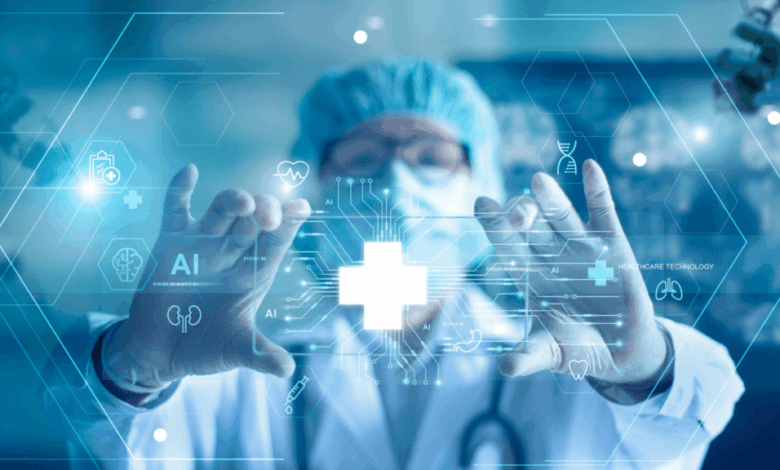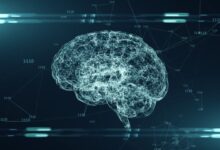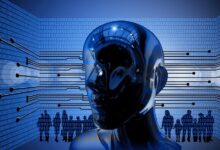Health Tech Revolution Treats A Better Personal Wellness

The healthcare industry is on the brink of a massive transformation, driven by an accelerating wave of technological innovation. What was once a slow, analog sector is rapidly evolving into a digitally-driven, data-rich ecosystem. This health tech revolution is fundamentally reshaping how we approach medicine, from diagnosis and treatment to prevention and personal wellness. It’s a convergence of cutting-edge fields—artificial intelligence, wearables, genomics, and telemedicine—all working in concert to create a more personalized, efficient, and accessible healthcare system. This article will take a deep dive into the most significant breakthroughs in health tech, their profound implications for patients and practitioners, the challenges that still need to be overcome, and the immense opportunities that lie ahead for a healthier and more equitable world.
The Artificial Intelligence in Medicine

Artificial intelligence (AI) is not just a tool for automation in healthcare; it is becoming a partner for clinicians, enabling a level of diagnostic precision and predictive power that was previously impossible.
A. AI for Diagnosis and Medical Imaging
AI is being trained on vast datasets of medical images—X-rays, CT scans, and MRIs—to identify subtle patterns and anomalies that a human eye might miss.
- Enhanced Radiology: AI algorithms can analyze a thousand X-rays in the time it takes a radiologist to review one, flagging potential areas of concern like tumors or fractures with remarkable accuracy. This not only speeds up the diagnostic process but also reduces the risk of human error.
- Pathology Analysis: AI is being used to analyze microscopic images of tissue biopsies, helping pathologists identify cancerous cells and classify tumors with greater precision. This can lead to more targeted and effective treatment plans.
- Predictive Diagnostics: By analyzing a patient’s electronic health records, genetic data, and lifestyle information, AI can predict the onset of diseases like diabetes or heart disease years in advance, enabling proactive intervention and prevention.
This level of predictive power shifts the focus from treating illness to preventing it, a fundamental change in the healthcare paradigm.
B. AI for Drug Discovery and Research
The process of developing a new drug is incredibly long, expensive, and often fails. AI is accelerating this process at every stage.
- Target Identification: AI can analyze vast genetic and biological datasets to identify new molecular targets for drugs, reducing the time it takes to find a promising candidate.
- Molecular Modeling: AI can simulate how a new drug molecule will interact with a protein in the body, helping researchers design more effective and safer drugs.
- Clinical Trial Optimization: AI can identify the ideal candidates for clinical trials, and analyze the trial data in real-time, helping to speed up the approval process for new medicines.
Wearables and Telehealth
The rise of connected devices and digital platforms is empowering individuals to take a more active role in managing their own health.
A. Wearable Technology and Remote Patient Monitoring
Wearable devices, from smartwatches to fitness trackers, are no longer just for counting steps. They are becoming sophisticated health monitors that provide a continuous stream of biometric data.
- Continuous Monitoring: Wearables can track heart rate variability, blood oxygen levels, sleep patterns, and even detect early signs of a heart attack or a stroke. This constant stream of data allows doctors to monitor patients remotely and intervene proactively.
- Chronic Disease Management: For patients with chronic conditions like diabetes or heart failure, wearables can provide real-time data to their doctors, allowing for more personalized and effective management of their condition.
- Personalized Wellness: Apps that analyze data from wearables can provide personalized recommendations for diet, exercise, and sleep, helping individuals make healthier lifestyle choices.
B. The Rise of Telemedicine
The COVID-19 pandemic accelerated the adoption of telemedicine, but its benefits extend far beyond a crisis.
- Remote Consultations: Patients can consult with doctors from the comfort of their own homes, eliminating the need for long commutes and reducing the cost of care. This is particularly beneficial for those in rural or underserved areas.
- Mental Health Services: Telemedicine has made it easier for people to access mental health services, reducing the stigma and improving access to therapy and counseling.
- Specialist Access: Patients in remote areas can now easily consult with specialists who may be hundreds of miles away, ensuring they receive the best possible care regardless of their location.
This shift to a more distributed and accessible model of care is a major step toward a more equitable healthcare system.
Genomic and Personalized Medicine

Our ability to read and understand the human genome has unlocked a new era of medicine that is tailored to each individual.
A. The Power of Genomics
Genomics, the study of an individual’s DNA, is at the heart of personalized medicine.
- Predictive Genomics: By analyzing a person’s genetic makeup, doctors can predict their risk for certain diseases and recommend preventative measures. For example, a person with a genetic predisposition for a specific type of cancer can undergo more frequent screenings.
- Targeted Therapies: Many diseases, including cancer, are caused by specific genetic mutations. Genomic testing can identify these mutations, allowing doctors to prescribe highly targeted drugs that attack the cancer at its genetic root, reducing the need for traditional, less effective treatments.
- Rare Disease Diagnosis: For patients with rare genetic diseases, a diagnosis can take years. Genomic sequencing can provide an answer in a matter of weeks, enabling early intervention and a better quality of life.
B. Bioprinting and Regenerative Medicine
The ultimate goal of personalized medicine is not just to treat disease but to replace damaged or diseased tissue with healthy, functional tissue.
- 3D Bioprinting: Scientists are using specialized 3D printers to create human tissue and even organs, layer by layer, using a “bio-ink” made of living cells. While a fully functional, 3D-printed organ is still a decade away, the technology is already being used to create skin grafts and tissue for drug testing.
- Stem Cell Therapies: Stem cells have the unique ability to develop into many different cell types. Researchers are using them to regenerate damaged tissue, from cardiac muscle after a heart attack to nerve cells for patients with spinal cord injuries.
Challenges and Opportunities
Despite the incredible progress, the health tech revolution is not without its challenges.
A. Data Privacy and Security
The vast amount of sensitive personal and medical data collected by health tech companies and devices is a prime target for cyberattacks.
- Patient Trust: A major breach of medical data could erode public trust and slow the adoption of these life-changing technologies.
- Regulatory Hurdles: Governments must create and enforce strict regulations to protect patient data and hold companies accountable for its security.
B. Equity and Access
While health tech has the potential to democratize healthcare, there is a real risk of creating a new digital health divide between those who can afford and access these technologies and those who cannot.
- Affordability: The high cost of genomic testing, advanced wearables, and other cutting-edge technologies could put them out of reach for many.
- Digital Literacy: A significant portion of the population lacks the digital literacy to fully engage with and benefit from health tech platforms and devices.
C. Regulatory Frameworks
The speed of technological innovation is outstripping the ability of regulators to keep up. This can create a vacuum where new technologies are deployed without proper oversight, potentially endangering patient safety. New, more agile regulatory frameworks are needed to balance innovation with public health.
Conclusion
The health tech revolution is a seismic shift that is fundamentally redefining our relationship with medicine. The era of a one-size-fits-all approach is ending, replaced by a personalized, preventative, and predictive model of care. Artificial intelligence is not just a tool; it is becoming an indispensable partner for clinicians, enabling faster and more accurate diagnoses and accelerating the pace of drug discovery. The proliferation of connected wearables is empowering individuals to become active participants in their own health journey, providing a continuous stream of vital data that can transform chronic disease management. Telemedicine has shattered geographical barriers, making quality care more accessible and equitable than ever before.
The most profound changes, however, are coming from the intersection of technology and biology. The power of genomics is enabling us to understand disease at its genetic root, paving the way for targeted therapies and truly personalized medicine. While the journey to a fully realized health tech future is not without its challenges—from ensuring data privacy and security to bridging the digital health divide—the opportunities are immense. We must address these hurdles proactively, with a commitment to creating a system that is not only technologically advanced but also equitable and accessible to all. The future of health is not just about treating disease; it is about building a proactive, preventative, and personalized ecosystem of care that empowers every individual to live a healthier and longer life. This is not just a technological revolution; it is a human one.




